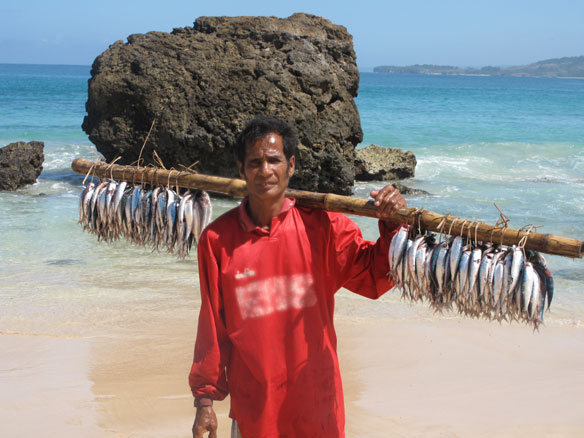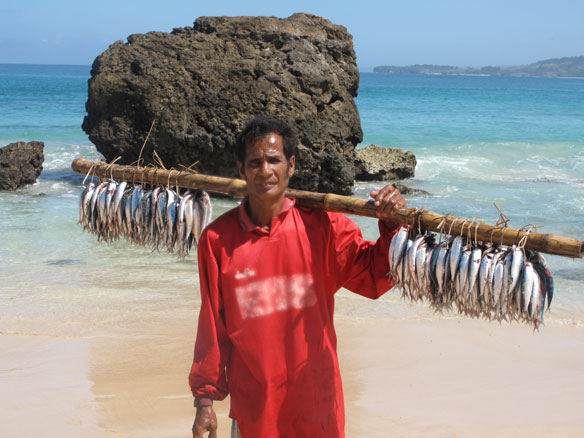
Fisherman, Indonesia. Photograph: © SAF — Coastal Care
Excerpts;
For centuries seaweed has been a farmed product, but it wasn’t until the 1930s that the use of carrageenan – a seaweed-derived thickening agent – turned commercial.
In Indonesia, seaweed farming has been growing over the last three decades. By 2009, Indonesia had become the world’s largest producer of katoni seaweed, one of the most important commercial sources of carrageenan…
Read Full Article; IRIN (09-16-2016)
Seaweed Can Help Feed the World. But will We Eat It? The Tico Times (11-03-2015)
A New Leaf: Seaweed could be a miracle food—if we can figure out how to make it taste good, The New Yorker (11-02-2015)
Seaweed, which requires neither fresh water nor fertilizer, is one of the world’s most sustainable and nutritious crops. It absorbs dissolved nitrogen, phosphorous, and carbon dioxide directly from the sea—its footprint is negative—and proliferates at a terrific rate. Kelp farming can rehabilitate the ocean’s threatened ecosystems, mitigate the effects of climate change, and revive coastal economies…
The Coming Green Wave: Ocean Farming to Fight Climate Change, The Atlantic (11-23-2011)
Ocean farming is not a modern innovation. Unfortunately, modeled on land-based factory livestock farms, aquaculture operations are infamous for their low-quality, tasteless fish pumped full of antibiotics and polluting local waterways. But a small group of ocean farmers and scientists decided to chart a different course. Rather than relying on mono-aquaculture operations, these new ocean farms are pioneering muti-tropic and sea-vegetable aquaculture, whereby ocean farmers grow abundant, high-quality seafood while improving, rather than damaging, the environment…









